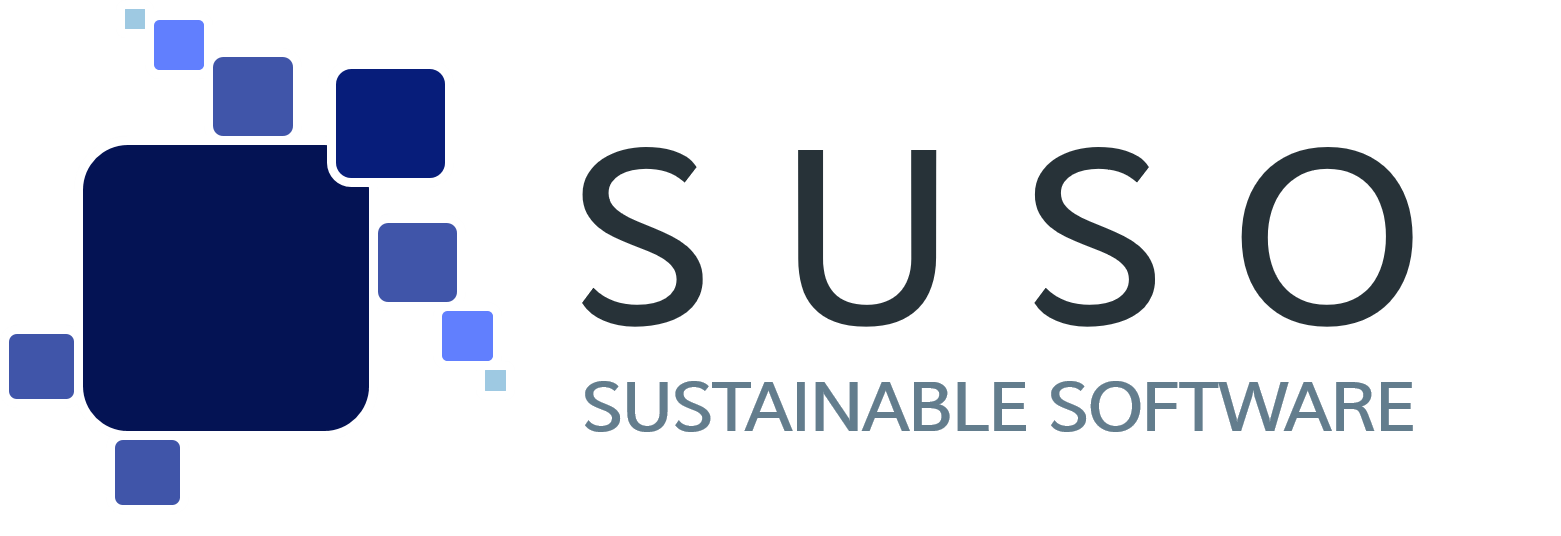Gamification as a motivator for sustainability
Gamification, a term that has gained importance within eLearning in recent years, refers to the application of playful elements and principles in non-playful contexts. It is an innovative method to motivate people and guide their behaviour in a certain direction.
The idea behind gamification is to harness people’s intrinsic motivation by offering them playful challenges, rewards and competitions. Through the use of points, badges, ranks or progress bars, users are activated and encouraged to perform certain actions or change behaviours.
The potential of gamification to promote sustainable behaviour is immense. By integrating game elements into software applications, you can motivate users to make environmentally friendly decisions, save energy, act socially responsible or use sustainable products. Gamification can help to bring about positive changes in behaviour and raise awareness for sustainability.
Gamification: basics and advantages
Definition and principles of gamification
Before we delve deeper into sustainable gamification, it is important to understand the basics of this concept. Gamification refers to the application of playful elements and design principles in non-game contexts, such as software applications, to motivate people and influence their behaviour.
The principles of gamification encompass various aspects, including:
- Challenges and goals: Games set clear goals and challenges that gamers want to achieve. Gamification uses similar mechanisms to get users to perform certain tasks or actions.
- Rewards and incentives: Games reward their gamers for achieving goals or certain behaviours. Gamification uses rewards such as points, badges or virtual items to motivate users and increase their engagement.
- Progress and feedback: Games often provide visual feedback on gamers’ progress. In gamification, progress bars, level-up systems or leaderboards are used to give users a clear overview of their progress and encourage them to continue.
- Competition and collaboration: Games can include competitive aspects where gamers compete against each other. At the same time, they also encourage collaboration by providing opportunities for cooperation. In gamification, both competition and collaboration can be used to motivate users and encourage social interaction.
Benefits of gamification in terms of user engagement and behaviour change
The application of gamification principles in non-game contexts offers a variety of benefits, especially in terms of user engagement and behaviour change. Here are some of the most important benefits:
- Increased user engagement: Gamification can significantly increase user engagement as playful elements release intrinsic motivation. By setting clear goals, providing rewards and creating challenges, you can encourage users to engage more deeply with a software application.
- Motivation for behaviour change: Gamification can help to promote positive behaviour change. By motivating users to perform sustainable actions through play, they can be encouraged to integrate environmentally conscious behaviour into their daily lives.
- Promoting learning: Gamification enables an interactive and experiential learning environment. By using playful elements, you can make complex concepts easier to understand. Users can learn by doing and experiencing in a safe environment.
Examples of successful gamification applications in different areas
Gamification has already been successfully applied in various areas. Here are some examples:
- Healthcare: Health and fitness apps use gamification to motivate users to exercise regularly or promote healthy habits. By setting fitness goals, giving virtual rewards and sharing successes with other users, you can encourage healthy behaviours.
- Education: Gamification is also used in education to make learning more effective and exciting. By using point systems, leaderboards and virtual rewards, you can motivate learners to expand their knowledge and achieve their learning goals.
- Sustainability: In the area of sustainability, you can use gamification elements to encourage users to adopt environmentally friendly behaviour. For example, apps can offer rewards for using public transport or track and optimise household energy consumption in a fun way.
Ready to discover your playful side and promote sustainable behaviour? Let’s dive into the world of sustainable gamification applications.
Use our tools for sustainable software
Our three tools help you acquire the knowledge, skills, and financial resources you need to develop sustainable software products and services that meet social, environmental, and economic needs. By using these tools, you can position yourself as a leader in sustainable software development and help create a better future for all.
Sustainable gamification: examples of use
Gamification elements for environmental sustainability
Gamification can also be used for social sustainability by motivating users to behave in a socially responsible way and by encouraging social interactions. By integrating donation mechanisms and rewards for social engagement, users can be motivated to support charitable causes and actively participate in community actions. Gamification is also a suitable tool for building communities and promoting interaction between users. Creating forums, discussion groups or challenges where users can collaborate strengthens social cohesion and supports social sustainability. A term you should know at this point: Participatory software development.
Gamification elements for environmental sustainability
Environmental sustainability can be promoted through the use of gamification elements by encouraging users to make environmentally friendly choices and develop sustainable habits. By providing real-time data on energy consumption and implementing rewards for energy savings, you can motivate users to be energy conscious and reduce their consumption. Gamification can be used to encourage users to use sustainable transport modes such as cycling, public transport or car sharing. By awarding points, virtual badges or rewards for environmentally friendly transport decisions, the switch to sustainable mobility solutions can be promoted.
Gamification elements for economic sustainability
Gamification can also be used to promote economic sustainability by encouraging users to conserve resources and support sustainable economic practices. By integrating gamified elements such as challenges, leaderboards and rewards, you can motivate users to use resources more efficiently and reduce waste. Gamification can also be used to encourage users to buy sustainable products or services from sustainable businesses. Rewards and discounts for buying environmentally friendly products can increase the incentive for sustainable consumption.
Two examples of successful sustainable gamification applications
EcoBuddy is designed to help users reduce their carbon footprint. Through the use of gamification elements such as challenges, virtual badges and progress tracking, users are encouraged to develop eco-friendly habits and track their progress.
JouleBug enables users to explore and implement sustainable behaviours. By completing tasks, earning points and sharing successes on social media, users are encouraged to integrate environmentally friendly habits into their daily lives.
Both apps show how gamification elements can be successfully used to motivate users to adopt sustainable behaviour and bring about positive change. The integration of such elements into software solutions offers great opportunities to promote sustainability in software development and to make a positive contribution to social, environmental and economic sustainability.
Best practices for sustainable gamification
Design principles for sustainable gamification applications
- Clear goals and rewards: Define clear goals that users can achieve and provide appropriate rewards to increase their engagement. Goals should be challenging but achievable to encourage motivation and progress.
- Adaptability: Take into account the different needs and preferences of users. Provide opportunities to customise game mechanics to accommodate individual preferences and abilities and provide a personalised experience. Inclusive design and accessibility should also not be forgotten.
- Contextualisation: Integrate gamification elements seamlessly into the context of the application. Make sure they are meaningful and relevant to the underlying goal or function of the software to ensure high acceptance and user engagement.
Involving users in the development process
- Regularly collect feedback from users to understand their needs and expectations. Conduct surveys, interviews or focus groups to gain insights and improve the design of the application.
- Offer users the opportunity to actively participate in the design process. By involving users in the development, they can contribute their needs and perspectives and thus contribute to a better application.
- Conduct beta tests to test the gamification application in a real-world environment and gather valuable feedback. Use the feedback to make adjustments and further optimise the application.
Continuous improvement and evaluation of sustainable gamification approaches
- Use data to understand user behaviour and gain insights into the effectiveness of gamification elements. Analyse metrics such as engagement, progress and behaviour change to identify strengths and weaknesses and uncover areas for improvement.
- Based on the insights gained, make iterative adjustments and improvements on an ongoing basis. Test new gamification elements, adjust rewards or optimise the user experience to increase the effectiveness of the application.
- Think long-term and ensure that the gamification application remains sustainable. Update content and rewards regularly to keep users interested and incentivise continued engagement.
Challenges and possible solutions
Technical challenges in implementing sustainable gamification
- Processing large amounts of user data and analysing it can be technically challenging. It requires an efficient data infrastructure and appropriate analysis tools to gain meaningful insights and adapt the gamification elements accordingly.
- If a gamification application has a large number of users, the technical systems need to be scalable to handle the demands. This may include providing sufficient server capacity and optimising the application for a high number of users.
Ethical concerns and solutions in the use of gamification techniques
- When collecting and processing user data, data protection and data security must be ensured. It is important to have clear guidelines and obtain users’ consent to protect their data.
- Gamification elements must not lead to users being manipulated or addicted. It is important to take a balanced approach and ensure that gamification techniques are used ethically and responsibly.
Adaptability of gamification elements to different target groups and contexts
- Offer options to personalise gamification elements to suit individual user preferences and abilities. This can include the choice of difficulty levels, themes or reward systems.
- Create flexible gamification elements that can be used in different application areas and contexts. This allows for adaptation to different industries, projects and target groups.
Future prospects and outlook
The potential of sustainable gamification in software development is promising. In the future, we can expect the following two developments in particular:
- Advancing technology: With the advancement of technologies such as augmented reality, virtual reality and artificial intelligence, new opportunities are opening up for innovative and immersive gamification experiences. You can use these technologies to further engage users in sustainable behaviours.
- Integration into different sectors: Sustainable gamification will continue to evolve across different industries. From healthcare to education to mobility, integrating gamification elements into digital products and services will help drive sustainable behaviour change in different contexts.
The use of sustainable gamification brings both challenges and opportunities for the software industry and software practitioners:
- Challenges: Integrating gamification requires resources, time and technical expertise. You also need to consider ethical concerns and data protection issues. It is important to address these challenges and find solutions to realise the full potential of sustainable gamification.
- Opportunities: Sustainable gamification offers the software industry the opportunity to develop innovative and attractive products that motivate users to adopt sustainable behaviour. By creating positive behavioural change, companies can contribute to social, environmental and economic sustainability while promoting customer engagement and brand loyalty.
Sustainable gamification has the potential to play a significant role in promoting sustainable behaviour in software development. By using playful elements and incentives, you can motivate users to adopt environmentally friendly habits and implement positive changes in their daily lives.





